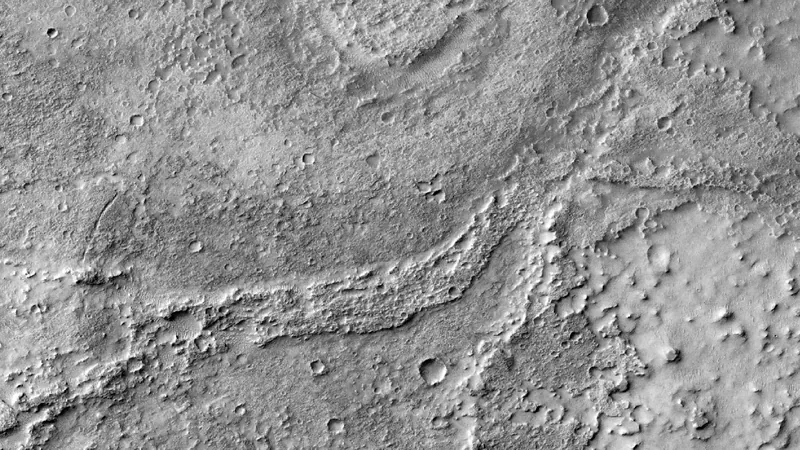
15,000 Kilometers of Ancient Rivers Discovered on Mars: A Game-Changer for Planetary Science!
2025-07-11
Author: Daniel
Unveiling Mars' Wet Past
In an astonishing breakthrough, researchers have uncovered a staggering 15,000 kilometers of lost rivers on Mars! These ancient waterways, identified through intriguing geological formations known as fluvial sinuous ridges or inverted channels, stretch across the Noachis Terra region, located in the southern highlands of the Red Planet.
Decoding the Evidence of Water
These ridges were formed when sediment from flowing water solidified, later becoming exposed as surrounding surfaces eroded away. Their widespread presence across various Martian terrains suggests that flowing water once thrived in this area, likely stemming from significant precipitation.
An Exciting Geological Time Capsule
Led by PhD student Adam Losekoot from the Open University and backed by the UK Space Agency, this groundbreaking research is being unveiled at the Royal Astronomical Society's National Astronomy Meeting 2025 in Durham. The findings indicate that surface water may have persisted in Noachis Terra during the Noachian-Hesperian transition—a transformative epoch in Mars' history that occurred around 3.7 billion years ago.
Why Noachis Terra Matters
Despite its significance, Noachis Terra has previously received less attention compared to other Martian regions, largely due to the absence of valley networks typically used to gauge historical rainfall. This study pivots away from that approach, focusing instead on fluvial sinuous ridges as vital evidence of ancient water.
Innovative Data Analysis
Utilizing data from three advanced orbital instruments—the Context Camera (CTX), Mars Orbiter Laser Altimeter (MOLA), and the High Resolution Imaging Science Experiment (HiRISE)—Losekoot and his team meticulously mapped these ridge systems, discovering segments that either stand alone or interlink for hundreds of kilometers, towering above the Martian landscape.
A New Perspective on Mars' Climate
The configuration and extensive spread of these ridges strongly indicate that they formed during a geologically stable period, hinting that Mars was once much warmer and wetter than previously believed. Losekoot states, "This evidence suggests that Mars was far more complex and active than we currently understand, which is incredibly thrilling to explore."
Challenging Old Paradigms
These significant findings are set to overturn established theories that depict Mars as predominantly cold and dry, with only sporadic periods of warmth. The integrated systems of ridges imply lasting wet conditions, challenging our understanding of the planet’s climatic history and igniting excitement for future Martian exploration.





 Brasil (PT)
Brasil (PT)
 Canada (EN)
Canada (EN)
 Chile (ES)
Chile (ES)
 Česko (CS)
Česko (CS)
 대한민국 (KO)
대한민국 (KO)
 España (ES)
España (ES)
 France (FR)
France (FR)
 Hong Kong (EN)
Hong Kong (EN)
 Italia (IT)
Italia (IT)
 日本 (JA)
日本 (JA)
 Magyarország (HU)
Magyarország (HU)
 Norge (NO)
Norge (NO)
 Polska (PL)
Polska (PL)
 Schweiz (DE)
Schweiz (DE)
 Singapore (EN)
Singapore (EN)
 Sverige (SV)
Sverige (SV)
 Suomi (FI)
Suomi (FI)
 Türkiye (TR)
Türkiye (TR)
 الإمارات العربية المتحدة (AR)
الإمارات العربية المتحدة (AR)